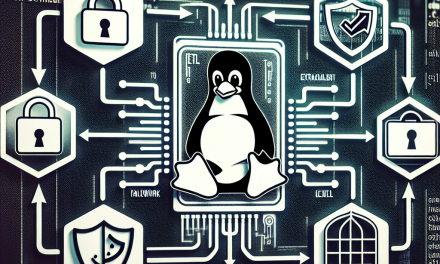Securing a Linux server involves many layers, and one of the most critical aspects is the hardening of configuration files. Configuration files dictate how services operate, how users interact with the system, and the overall security posture of the server. In this article, we will explore best practices for hardening configuration files to enhance your Linux server’s security.
Understanding Configuration Files
Linux operates using a myriad of configuration files, each serving a specific purpose. Common files include:
- /etc/passwd: User account information.
- /etc/shadow: Password hashes for user accounts.
- /etc/ssh/sshd_config: SSH daemon settings.
- /etc/sysctl.conf: Kernel parameters.
- Application-specific configuration files (e.g., MySQL, Apache, etc.)
Given their importance, misconfigurations or exposed settings can lead to vulnerabilities in your server. Therefore, it’s essential to regularly audit and harden these files.
Best Practices for Hardening Configuration Files
1. Set Appropriate File Permissions
Configuration files often contain sensitive information, such as passwords, user accounts, or keys. Start by ensuring that these files have the appropriate permissions. Use commands such as chmod and chown to restrict access:
# Set owner and remove group and other permissions
sudo chown root:root /etc/ssh/sshd_config
sudo chmod 600 /etc/ssh/sshd_config2. Regularly Update Configuration Files
Outdated configurations can leave vulnerabilities. Keep track of the configurations used and ensure they align with the latest security practices. This might include changing default settings, disabling unnecessary services, or adjusting security options.
3. Disable Unused Features
Many default configuration files come with features enabled that you might not need. For instance, if you’re running an Apache server, disable modules that aren’t being used. This not only reduces the attack surface but also minimizes potential exploits.
# Disable a module on Apache
sudo a2dismod status4. Use Strong Authentication Methods
For files like /etc/ssh/sshd_config, enforcing strong authentication methods is crucial. Here are a few recommendations:
- Disable root login via SSH by setting
PermitRootLogin no. - Implement Public Key Authentication and disable password logins with
PasswordAuthentication no. - Change the default SSH port from 22 to a custom port to reduce exposure to automated attacks.
5. Implement Logging and Monitoring
Enable logging in key configuration files. For instance, in /etc/ssh/sshd_config, ensure that you have logging set up to keep track of successful and failed login attempts:
# Example configuration for sshd_config
LogLevel VERBOSEIncorporating tools like fail2ban can provide additional protection against brute-force attacks by banning IPs that have failed attempts.
6. Utilize Security Enhancements
Make use of security modules and tools to harden configuration files further. For instance, consider:
- SELinux or AppArmor: Enforce mandatory access controls to restrict applications’ capabilities.
- AIDE (Advanced Intrusion Detection Environment): It can help monitor changes in critical configuration files.
# Install AIDE (Debian/Ubuntu)
sudo apt install aide
sudo aideinit7. Encrypt Sensitive Configuration Files
If a configuration file contains sensitive information (like database credentials), consider encrypting these files. Using tools like GnuPG or OpenSSL, sensitive data can be protected, adding an extra layer of security.
# Encrypt a configuration file
gpg -c /etc/myapp/config.conf8. Backup Configuration Files Regularly
Regular backups of your configuration files allow for quick recovery in case of accidental changes or breaches. Store backups securely, ideally off-site, and ensure that they are also protected by appropriate permissions.
# Backup example
cp /etc/ssh/sshd_config /etc/ssh/sshd_config.bak9. Establish a Configuration Management Process
Implementing a configuration management tool (CM) like Ansible, Puppet, or Chef can greatly enhance security. These tools help maintain consistency across deployments, automate security configurations, and make it easier to audit changes.
Conclusion
Hardening configuration files is an essential step in securing your Linux server. By following the above best practices, you can significantly reduce vulnerabilities and ensure your systems are robust against threats. Remember, security is a continuous process—regular audits and updates are crucial in maintaining a secure environment.
For further reading and detailed insights, stay tuned to the WafaTech Blog where we share tips and tricks for optimal Linux server management and security practices. Happy hardening!





